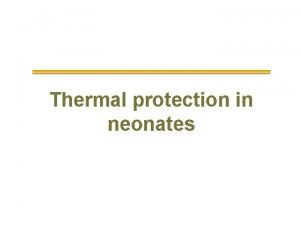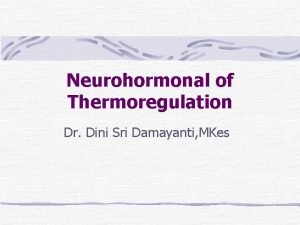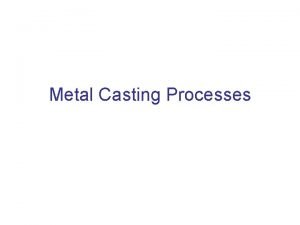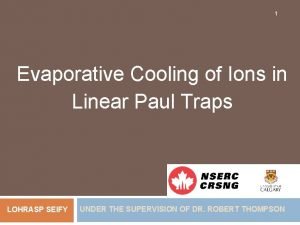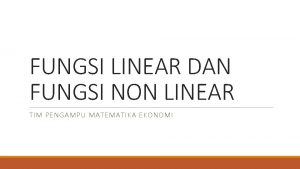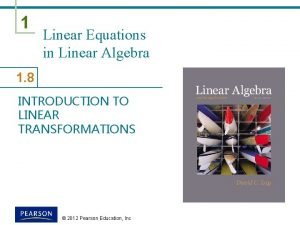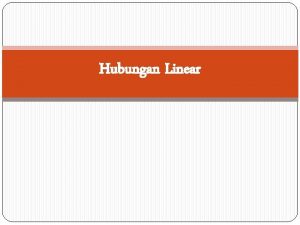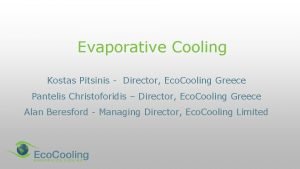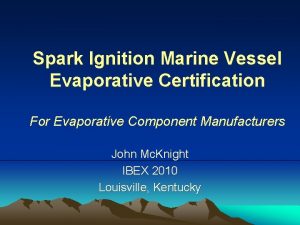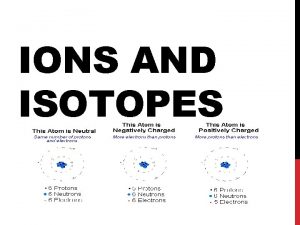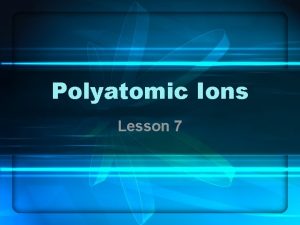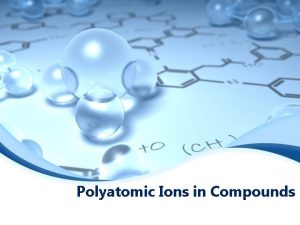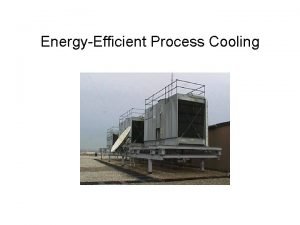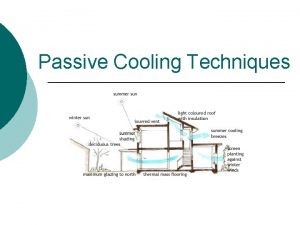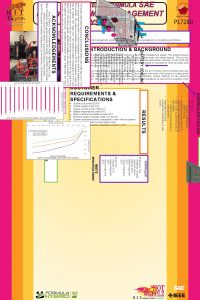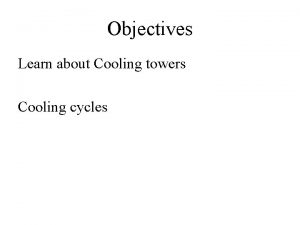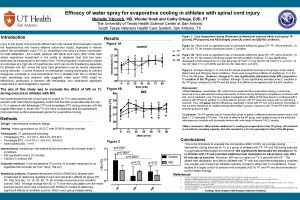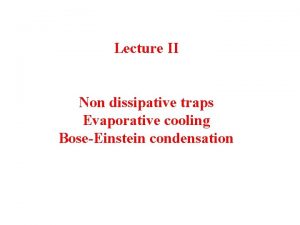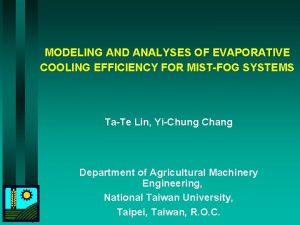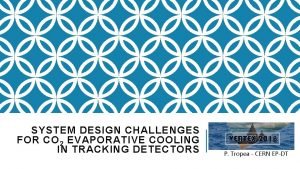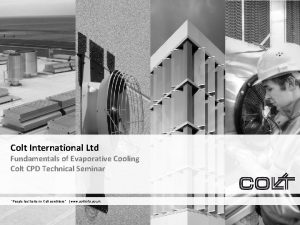1 Evaporative Cooling of Ions in Linear Paul



















- Slides: 19

1 Evaporative Cooling of Ions in Linear Paul Traps LOHRASP SEIFY UNDER THE SUPERVISION OF DR. ROBERT THOMPSON

Overview 2 What we are trying to achieve Theory Results Discussion Where to go from here 2

Goals & Motivation 3 Evaporative cooling in Linear Paul traps Cooling method independent of species Non-invasive, universal method of cooling Titan trap mass measurement Optimize temperature drop per particle lost 3

Evaporative Cooling #particles 4 #particles Energy

Evaporative Cooling 5 5

Evaporative Cooling 6 Particles must interact, and allow system to equilibrate Highest energy particles are allowed to escape 6

Electrode Configuration Shape of the potential at some to and half a period later Ω : Oscillation Frequency ro : Radius of the trap zo : Length of the trap UDC : Amplitude of DC component UAC : Amplitude of AC component Images from: 7 Humboldt-Universität zu Berlin - http: //www. physik. hu-berlin. de/nano/forschung-en/np

Ions in Linear Paul Traps 8 Simple harmonic motion in z-direction Number of particles and energy not conserved Particle-trap heating Particle-particle coulomb heating Any cooling method must compete with above 8

Radial Potential Reduction Rate Axial Potential Reduction Rate 9

Method of Investigation 10 a and q are systematically picked RPRR and APRR are picked by monte-carlo method Simulations model the ensemble Cooling measured 10

Results 11 11

Results 12 12

Results 13 13

Conclusion 14 Evaporative cooling overcomes intrinsic heating of LPT Evaporative cooling can be optimized Temperature drop of ~95% , by losing less than 10% of initial particles 14

Future work 15 Run MC sets for lower q values to verify interaction rate Apply evaporative cooling to experiments in TITAN located in TRIUMF 15

Results 16 Temperature drops of min ~ -1 K/Particle max ~ 120 K/Particle Unsuccessful runs: A lot of heating before good evaporations A lot of heating, and only bad evaporations 16

Constants 17 Initial particles = 256 Initial temperature = 450 K Simulation time of 5 x 10 -4 sec Computational time of ~4 hours 17

Not all data is useful 18

* 19
 Positive ions and negative ions table
Positive ions and negative ions table Mechanisms of heat loss in newborn
Mechanisms of heat loss in newborn Sri damayanti
Sri damayanti Classification of casting process
Classification of casting process Imeco evaporative condenser
Imeco evaporative condenser Evaporative
Evaporative Simple linear regression and multiple regression
Simple linear regression and multiple regression Contoh soal persamaan non linier metode biseksi
Contoh soal persamaan non linier metode biseksi Linear texts
Linear texts Linear plot in literature
Linear plot in literature Contoh soal persamaan non linier metode tabel
Contoh soal persamaan non linier metode tabel Linear vs nonlinear pipelining
Linear vs nonlinear pipelining Application of multimedia
Application of multimedia Left and right linear grammar
Left and right linear grammar Fungsi linier dan non linier
Fungsi linier dan non linier Perbedaan fungsi linear dan nonlinear
Perbedaan fungsi linear dan nonlinear Do linear transformations preserve linear independence
Do linear transformations preserve linear independence Linear algebra 1
Linear algebra 1 Cara koordinat lereng
Cara koordinat lereng Principle of linear impulse and momentum formula
Principle of linear impulse and momentum formula

